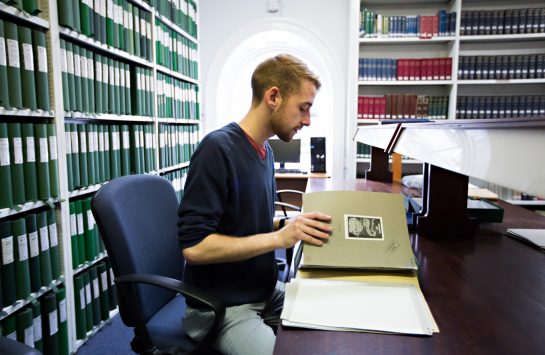There is a very active community of researchers. Undergraduates and MAs are encouraged to join current (and often former) PhDs at the regular meetings of the Medieval Work-in-Progress Seminars (10-12 times per year), which attract distinguished scholars in London and beyond. Byzantinists and medievalists at The Courtauld are also active at other research seminars throughout London, such as those which take place in the nearby Institute of Classical Studies and Warburg Institute. Public lectures with acclaimed visiting speakers are regularly organised, and The Courtauld organises and hosts colloquia and large-scale conferences in connection with events such as exhibitions.
With the range of interests and expertise of the staff, and the availability of research resources in London, research students are encouraged to undertake pioneering work in a range of areas of art history. The large number of active research students in the Byzantine and Medieval section creates a supportive and stimulating environment. Doctoral students run their own discussion group, and also organise an annual one-day colloquium, which welcomes papers by research students from other institutions. Towards the end of their course, they are given the opportunity to present their research to their peers within The Courtauld’s wider research community, at the postgraduate symposium which takes place each year.

Photographic resources for research
The Courtauld is fortunate to possess truly exceptional photographic resources for research. The Conway Library, named after its founder, Sir Martin Conway, has been enriched systematically by photographic expeditions, purchase and exchange, and is especially strong in the classical, Byzantine and medieval areas. While the classical architecture collection is especially important and includes the original illustrations for A.W Lawrence’s standard work, Greek Architecture, Medieval (including Byzantine) architecture, mural painting and mosaic, manuscript illumination, metalwork, sculpture, and stained glass, also form special collections. For manuscripts alone there are about 100,000 mounts. The photographs themselves are in some cases of historic importance (e.g. near-eastern material by Robert Byron, T.E. Lawrence).
The Garrison Collection, formed by the noted scholar of medieval Italian art, preserves Garrison’s notes and files (on matters such as liturgy and hagiology) as well as the photographs amassed for research purposes.
The Slide Collection, although primarily geared to the requirements of teaching, is extensive, and contains research material including the Hawkins and Winfield archives of photographs taken, for the most part, during conservation campaigns (mostly Byzantine mosaics and wall-paintings).





